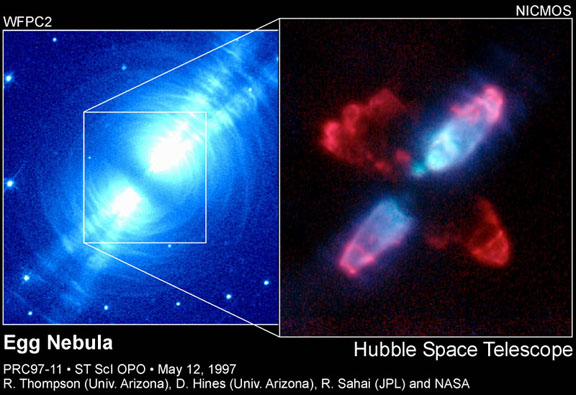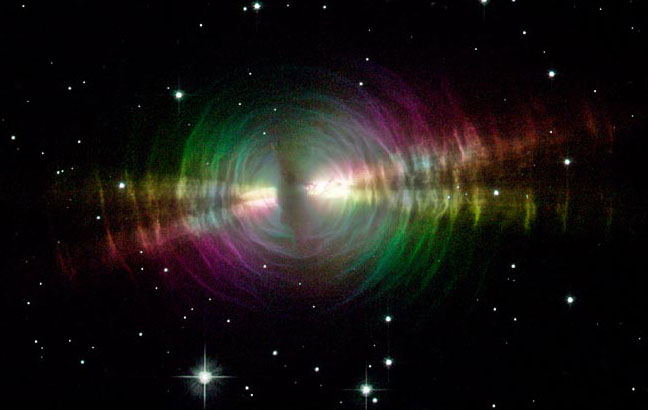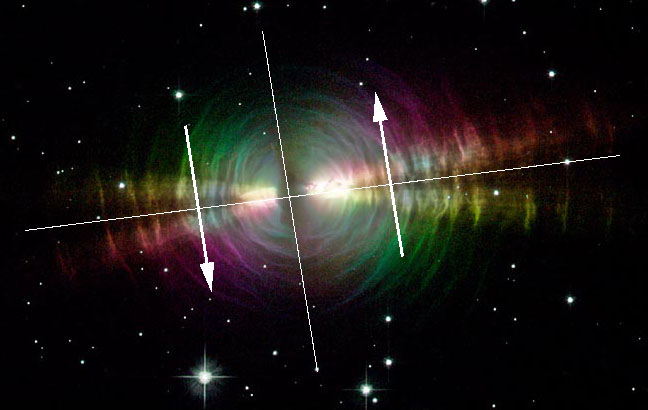I love the images of the Egg Nebula that have come from the Hubble Space Telescope. Below is an image from May 12, 1997.

The Ball-of-Light Particle Model predicts that planetary nebula are decaying balls of light. The core of the star has a electric and magnetic fields that are polarized in opposite directions. Traditional theory of star formation predicts that a star like the Egg Nebula is formed by a dusty donut-shaped torus of material spinning around the star. Many astrophysicists point to this image of the Egg Nebula and say, "See, you can see the dusty torus spinning around the equator of the star -- it masks the central star!" I agree there is a dusty torus of material spinning around the star. However, this is not what causes, or focuses the jets shooting out from the poles. This is caused by material coming off the equator as the electromagnetic field flips orientation as it sweeps from pole to pole. See Eta Carinae. Want proof? If the accepted view of star formation is correct, then the star is spinning on the polar axis and the jets will have light that is polarized in the same direction. If my Ball-of-Light Particle Model is correct then the jets will be polarized in opposite directions.
In the image below is a key graphic that helps to summarize the Ball-of-Light Particle Model. Note the second sphere from the left in the upper row. Notice how the magenta arrows--representing the orientation of the magnetic field--are pointing up on the left hemisphere and down on the right hemisphere. They are oppositely polarized. A spinning object would be polarized in the same direction.
The next image of the Egg Nebula was released on April 3, 2003. This latest image shows how the jets of material are polarized.

It is a simple, visually-obvious fact, that jets are oppositely polarized -- matching the Ball-of-Light Particle Model. Let us look into this in more detail.

The long, thin, roughly horizontal line in the obove image is aligned with the jets and the poles of the Egg Nebula. The short, thin roughly vertical line in the obove image is aligned with the equator of the Egg Nebula. Redish polarized light is receding. Bluish polarized light is approaching. The arrows are indicating how the magnetic fields are spinning in opposite directions on the two hemispheres. The traditional explanation of how stars form, and how planetary nebulae work does not explain this image. The Ball-of-Light Particle Model does explain this image. Simple, sweet, powerful. I predict more, and more, and more images like this will flood the astronomical community until their faith will be totally shaken. This is the type of image that just simply pulls the rug out from under standard theory of star formation.